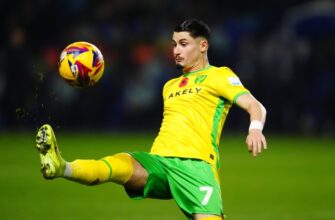The annual announcement of The International`s caster lineup often feels like a mere footnote, overshadowed by the grandeur of the tournament itself, the hero meta, or the latest cosmetic treasures. Yet, for many dedicated fans, the voices guiding them through the tactical drafts and epic teamfights are as crucial as the players themselves. For The International 2025, a closer look at the broadcast talent reveals a shifting landscape, particularly within the Russian-language commentary team, signaling a fascinating evolution – or perhaps a subtle revolution – in how we consume competitive Dota 2.
The Perennial Player-Analyst Paradox
One of the most immediate points of contention, particularly within specific language broadcasts, has been the noticeable dearth of professional Dota 2 players – current or retired – among the analyst desks. It`s a timeless debate in esports: are professional insights, often raw and unfiltered, more valuable than the polished delivery of a seasoned broadcaster? Pro players, undoubtedly, possess an unparalleled understanding of game nuances, intricate strategies, and the subtle mind games played at the highest level. However, articulating these complex thoughts succinctly and engagingly for a broad audience is a distinct skill, one not universally shared among even the most brilliant minds of the game.
Historically, the allure of seeing legendary figures like Dendi, Solo, or other celebrated veterans in the analyst chair was undeniable. Their presence brought an air of legitimacy and an unspoken depth of knowledge, even if their delivery occasionally leaned more towards authenticity than eloquence. For The International 2025, the balance appears to have shifted significantly, with a marked decrease in this direct player representation, especially when compared to previous iterations or even other language broadcasts.
The Unseen Hand: Economics and Independent Streams
Beneath the surface of broadcast talent debates lies a more pragmatic, often overlooked reality: economics. The landscape of content creation has dramatically evolved. For many high-profile professional players, the option of launching a personal watch party stream during The International presents a significantly more lucrative and flexible alternative to committing to a traditional broadcast studio. Why split meager broadcast fees and adhere to rigid schedules when your own audience, direct monetization, and unbridled commentary can potentially yield greater rewards?
This dynamic creates a peculiar paradox: the very talent most fans desire to hear from might find it more profitable to commentate from their couch rather than a studio booth. Valve, in its infinite wisdom, has yet to fully bridge this gap, leaving broadcast teams to navigate a competitive talent market where the allure of traditional media no longer holds absolute sway over the digital independent creator.
New Blood vs. Old Guard: A Generational Shift?
While the absence of familiar professional faces has sparked considerable discussion, The International 2025 roster also heralds the arrival of a fresh wave of voices, many of whom are making their TI debut. This influx of “new blood” is a double-edged sword. On one hand, it offers an opportunity for emerging talent to prove themselves on the grandest stage, potentially bringing innovative perspectives, infectious enthusiasm, and a different rapport with the audience. On the other hand, it raises questions about the continuity of experience and the potential loss of established chemistry that veteran broadcast teams often cultivate over years of working together.
The slow pace of generational change within Dota 2 casting has often been a talking point. This year, however, appears to be a definitive moment of transition. Whether this signifies a deliberate strategy to cultivate fresh talent or is simply a consequence of the aforementioned economic shifts, it promises a different auditory experience for viewers.
The Future of the Broadcast Booth
So, what does this evolving landscape mean for the average viewer tuning into the pinnacle of Dota 2 esports? It suggests a broadcast that might rely less on the gravitas of professional players and more on the analytical depth and entertaining delivery of dedicated casters and analysts. This isn`t necessarily a downgrade; it`s a shift in focus. The challenge for the broadcast teams will be to maintain viewer engagement and deliver insightful commentary without leaning on the inherent “star power” of professional players.
The grand stage of The International demands commentary that is both informative and captivating. The balance between technical analysis, narrative storytelling, and fan engagement becomes paramount. As the esports industry matures, so too must its broadcasting arm, adapting to new economic realities and cultivating talent that can thrive in a rapidly changing media environment.
Concluding Thoughts: An Evolving Symphony
The composition of The International 2025`s broadcast team, particularly the notable shifts within certain language spheres, isn`t merely a minor reshuffle; it`s a telling indicator of the broader evolutionary trajectory of esports broadcasting. It highlights the complex interplay between traditional media structures, the burgeoning independent content creator economy, and the perennial quest for insightful and engaging commentary.
While some fans may lament the reduced presence of their favorite professional players, this transition also presents an opportunity for new voices to emerge and redefine the standard of esports commentary. The future of The International`s broadcast symphony will ultimately depend on whether this new ensemble can strike a delicate balance between fresh perspectives, analytical rigor, and the captivating narrative that truly brings the game to life.








